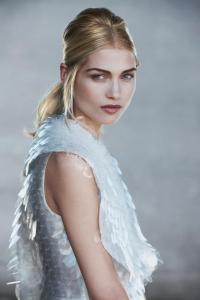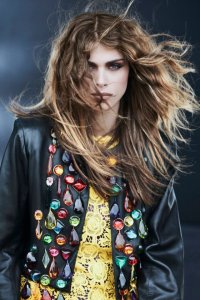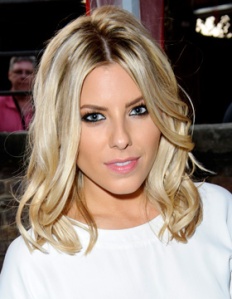Archive for November, 2012
50 Shades of Blonde
Posted by Hairstylist's Inside Info in Uncategorized on November 6, 2012
Blonde hair has always been sort after, whether because of the saying blondes have more fun or because many clients are born with fair hair and then later in life go darker or simply because blonde hair is eye catching, it remains that blonde hair is in high demand and a large percentage of a hairdressers business.
Platinum Blonde, Strawberry Blonde, Beige Blonde, Champagne Blonde,Honey Blonde, Golden Blonde, Sand Blonde – the list of blonde colours are endless. So why is it that most woman end up leaving the salon with a bleached blonde, peroxide blonde or even worse bottle blonde hair?
Highlights are in my opinion the best way to achieve a natural blonde hair colour. No one naturally has a head of hair all the same colour. A tint being a single colour, can end up looking flat and unnatural. Even if you are tinting your hair, perhaps to cover grey, I suggest that you put a few high and low lights to add depth and dimension to your colour.
I prefer doing highlights for blondes because the colour does not grow out from the root in a solid line. Highlights allows the colour to grow out more naturally and also allows the clients hair to last longer between colour applications. It is unnecessary to do a full head or even a half head of highlights every time the client come to touch up her colour. Often a parting or hairline colour is all the client may need. This not only saves the client money but allows for her own colour to add dimension to the total hair colour.
To give your highlighted blonde hair a natural look it is important that your hairdresser does plenty of fine highlights. This can be a time consuming exercise and many hairdressers would rather slice than weave highlights. Theses creates a slightly different effect but if done finely enough they can also work at creating a natural effect, although the block of colour that the slice creates does not give as soft an appeal as a weaved highlight. Slices are great for covering grey though and what I often like to do on clients is alternate both weaved and sliced highlights.
A while ago it was fashionable to give clients thick striped highlights creating a two toned effect. This method of highlighting can work when the highlighted colour blends in with the base colour, giving a slight lift and creating interest on a monotone colour. But as a two toned blonde highlighted effect, it tends to look artificial and dated.
Today the range for blonde tints, high-lifters and toners available are extensive. Your hairdresser should be taking advantage of these colours available from all the major hair colouring companies. I often use three or four different shades of blonde on a client to give the hair a distinct tone and add texture and depth. Before deciding on the overall tone of your blonde hair take into consideration your skin tone, for example – a sallow skin will not look good with a golden or honey coloured blonde. If you have freckles it is important that the tone of these be also be taken into account as freckles too are either warm or cool toned. Discuss with your hairdresser the shade of blonde best suited to you before highlighting.
Another factor to take into account is your root or base colour. Generally, it is not a good idea to have your highlighted hair more than 4 shades lighter than your natural colour. Highlights that are a lot lighter than your own colour means extensive upkeep as the roots show though quicker and more distinctly. And too frequent an application of lifting agents can compromise the condition of the hair. If your hair is a dark base it is best to add a variety of blonde shades ranging from your own base colour to a medium to light blonde.
Perhaps one of the most dreaded of highlighted blonde hair colours is highlights that go brassy or yellow. This normally happens when using bleaching powder. Hair that has been bleached, oxidizes over time, giving a yellow tinge to the hair. To help prevent this, use a shampoo specifically for blonde hair, these shampoos are normally purple as it is the purple pigment in the shampoo that will neutralize the yellow from the highlighted hair.
Although, using a blonde shampoo is useless if the hair has not been lifted to the correct colour to start with. To lift hair colour to a blonde, the hair colour pigments must be lifted from their natural state to a red, then orange, then yellow, to a pale yellow and finally to a beige blonde. Everyone has different amount of dark and red pigments in their hair and these pigments determine how long the hair need to process before they reach a beige or platinum blonde. Brassy hair colour is often the result of the bleaching agent not being allowed to process for long enough.
Any lifting process does damage to the hair, so if you are highlighting or lifting your natural colour it is essential that you maintain the condition of your hair. Regular treatments are important to replace both protein and moisture that is lost during lighting, as is using a salon approved shampoo and conditioner. Also light colour does not reflect the same way a dark colour does and therefore blonde hair does not have the same shine as darker hair has. Use a shine finishing spray to give your blonde hair a healthier look. If you work with your hairdresser you can create a natural, healthy and manageable colour. Done correctly you can have a lot of fun being a blonde.
All the pictures on this post have been taken from the Schwarzkopf Website and Facebook page. Schwarzkopf is the product I use for all my colours – they have an extensive range of colours available both for salon use and home use. Their colours nourish the hair, adding shine and a rich deep colour. They have a particularly wide range of high-lifters and toners for blondes a well as non abrasive bleaching products. Their home care products are again extensive, a product for every need to feed and care for your hair.










